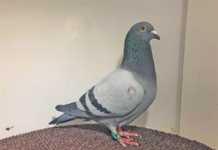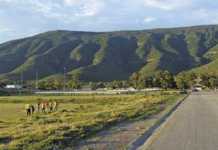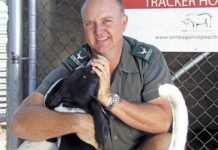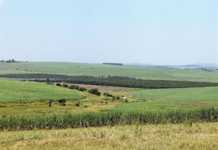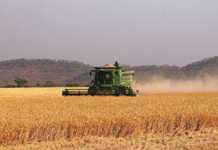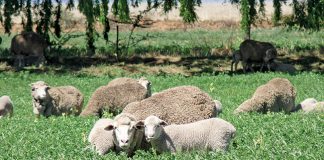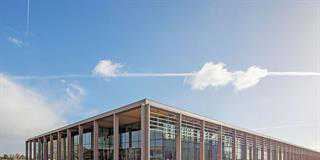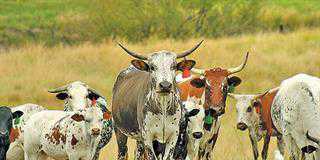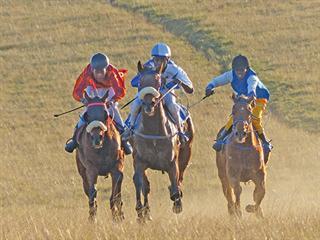
It had taken us a while to find the race track. There was no sign, only a chain of people who guided us past clusters of houses, past lazy-looking livestock and eventually over a gentle hill to a stretch of open veld. And there it was: two small furrows arching around a slight depression in the landscape, to a finish line marked by two thin poles.
Horses covered in blankets were being led around and the first braai fires had already been lit in anticipation of the day’s events. Soon a steady flow of bakkies, cars and groups of men on horseback gathered near a cluster of giant eucalyptus trees.We were on the outskirts of the village of Theko in the former Transkei and about to enjoy a Xhosa tradition stretching back more than 120 years.
A rich history of horse racing
“Horse racing started here during colonial times,” says East Cape Horse Racing Association (Echra) communications officer, Mahlubi Puzi. “The English introduced the different sports to the local tribes in the Eastern Cape and coached cricket and rugby in the mission schools,” he says. “But the British soldiers during those times raced amongst the locals to get acceptance, that’s how horse racing got into the area.”

An ‘indigenous’ horse approaching the race track with admirers singing war songs in its wake. Races between horses from local villages in the former Transkei have created enduring rivalries between families.
It soon becomes clear that the main attraction of the day are the vaunted Thoroughbred horses (or ‘tall horses’) of the Xhosa. As the horseboxes arrive, they attract youngsters intrigued by the movement and sounds inside, and by the time the animal is released, the awe of all nearby is palpable. Andile Kula, current chairperson of Echra, explains that these impressive horses have been purchased mostly from established stables in KwaZulu-Natal and the Eastern Cape.
They have been trained in the former homelands to compete in a racing schedule stretching from Umzimkulu in northern Transkei to Bisho in the former Ciskei in the south. Horses have always been part of Andile’s life and he owns two Thoroughbreds named Medicine and Why Not? “I care about horses,” he says. “I have that bond because I grew up in a family with them.”
However, although the Thoroughbreds are deeply respected, Mahlubi is quick to point out that the main attraction at these races are the historical grassroots ‘indigenous horses’, simply referred to as the ‘horses of the Xhosa’ by most people. In each town, there is a group of people who race these horses and organise their own races with various sponsors. The more affluent riders who own Thoroughbred horses travel in the area and join in the local races, which mainly feature ‘indigenous’ horse racers.
They benefit from local sponsorships, such as that by the main sponsor of the events, the Racing Trust. The latter falls under the auspices of the national Racing Association. The main goal of the Racing Trust is to develop the non-commercial aspects of horse racing, and it is involved in a number of transformation initiatives in South Africa.
According to Tornado Nkofunga, a former jockey and trainer from Butterworth, life without horses would be unthinkable.
“I was born into these races,’’ he says. “We grew up with our fathers owning horses, so our environment was all about horses.” He recalls that his father bought a horse called Bullovo Boy from Birch Brothers, famous horse breeders near Dordrecht, and it went on to win many races. Two other frequent winners of his were Evening Sky and Winter’s Breeze.
The essence of the race
Near the cars parked beside the horse track, drinks are being poured and stories told, while groups of friends begin queueing for the shisa nyama (braai). Andile’s bakkie is already parked at the finish line, where a number of spectators have now congregated. He will be the master of ceremonies, managing eight races ranging in distance from 1 000m to 1 400m.
The race proceedings are delightfully slow and informal. Some horses are honoured by supporters singing traditional war songs to them as they are led passed Andile’s bakkie – the administrative centre of the races. Here, Andile’s wife, Phumla, busies herself with race administration while his daughter, Nanga, sits perched on the roof of the bakkie. “It’s a family affair,” he assures me.

Akona Gibson hard at work braaiing chicken pieces for hungry spectators in Theko village.
Eventually, jockeys and horses make their way slowly along the roughly half-moon-shaped race track to the 1 000m, 1 200m and 1 400m starting lines. By the time the horses reach the starting line, it becomes apparent that the starter, armed with a white flag, has his hands full getting the excited horses into a line. At last, they lunge forward to a dropping flag – only to be called back. It is a false start. Once again they are arranged in a line of sorts before they are launched – this time successfully.
The enthusiastic chatter from the spectators soon gives way to the occasional shout and then screams of encouragement. The excitement spurs a group of boys into running towards the approaching galloping horses. And then, as the horses begin to close in on the final 150m, it’s clear that the fervour has infected everybody. An old man punches the air with his fist and bares his teeth, screaming, as the horses gallop across the finish line. Incredibly, the energy of the crowd is not only maintained throughout the afternoon, but reaches new heights as long shadows begin falling over the race track.
Young jockeys are revered
As yet another posse of brightly clad jockeys make their way along the race track, I ask Tornado about the importance of having the smallest possible jockey on a good horse. “You mustn’t eat too much umngqusho (samp). You mustn’t get too heavy,” he says with a laugh. “These Thoroughbreds are very sensitive to weight – the lighter the rider, the better.”
He explains that horse racing is a big deal to the boys, as talented jockeys often become as celebrated as the horses they ride. In fact, all the winning jockeys of the day are hailed by the crowd at the conclusion of each race. One jockey, Babalo Gibson, riding the ‘indigenous’ horse People Are Talking About You, is clearly soaking up the crowd’s attention. The son of local traditional healer George Gibson, Babalo admits that he loves horse racing and says that his father taught him.
“This is his fourth year,” says George proudly.
A special connection
In the distance, away from the excitement, a man dressed in a balaclava has been supervising the grooming of his horses all afternoon. He has politely declined to be interviewed; clearly he is interested only in his horses. According to Mahlubi, he is Price Buqa, from Tabankulu in Pondoland, a man who has shown a passionate dedication to racing over the years. I realise then, that it is perhaps Price’s presence at the races that best epitomises that unique bond between man and horse. Mahlubi certainly recognises this connection.
“I like the sport of horse racing, not the business; the appearance of a horse is quite amazing – it has a majestic look,” he says. British Prime Minister Winston Churchill summed it up best of all: “There is something about the outside of a horse that is good for the inside of a man.”
Phone Andile Kula on 082 697 5929.

